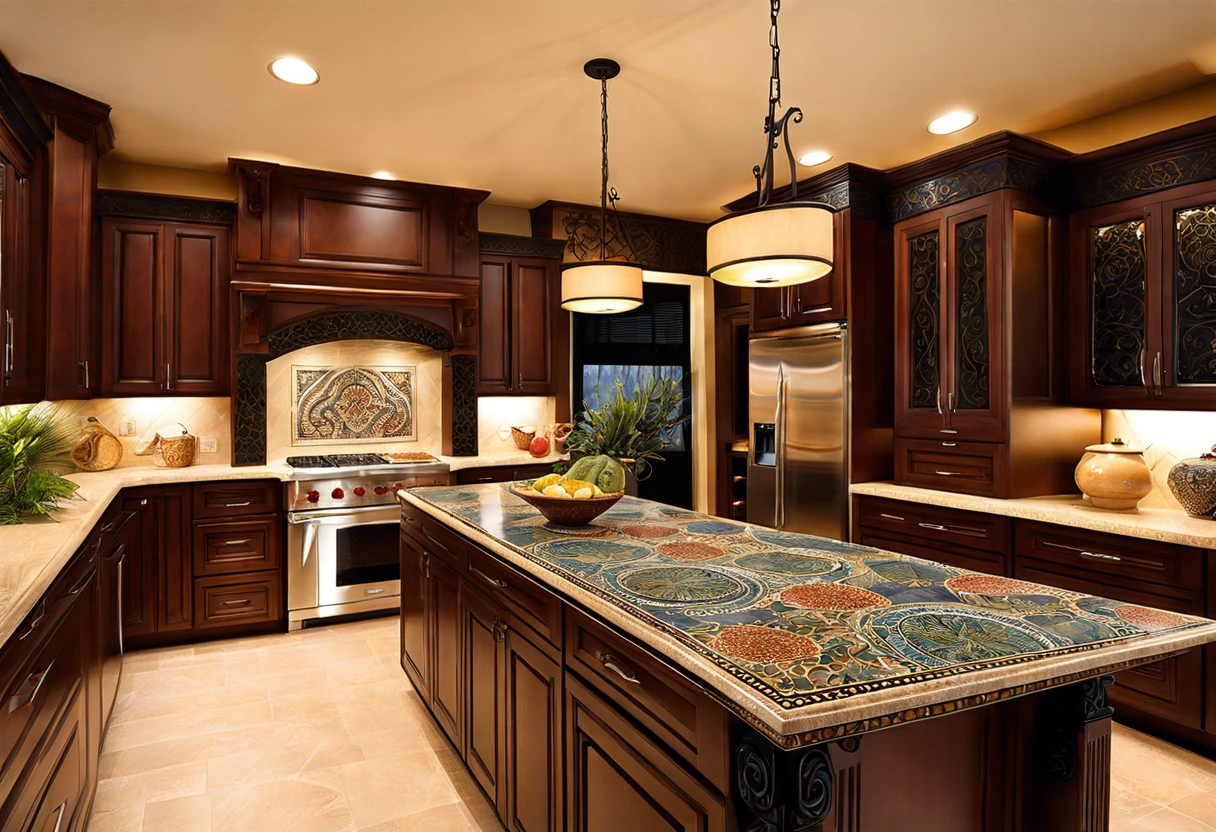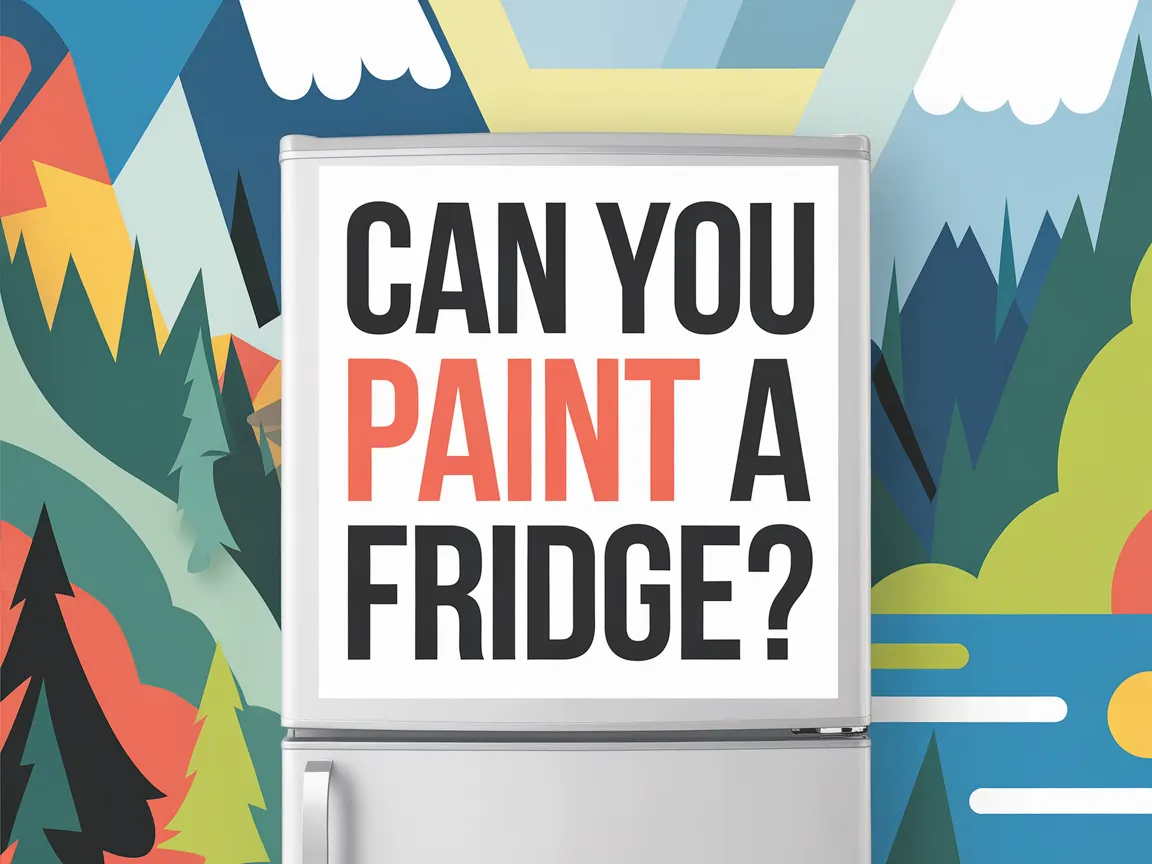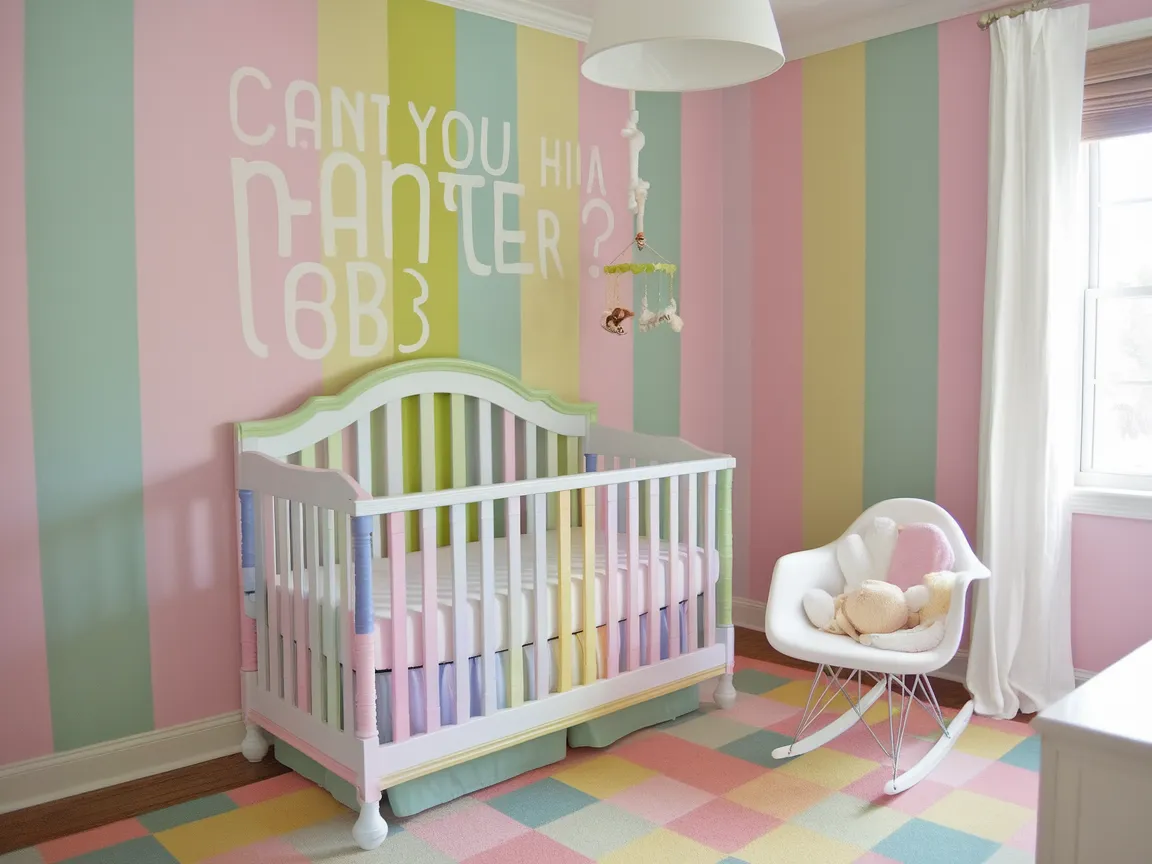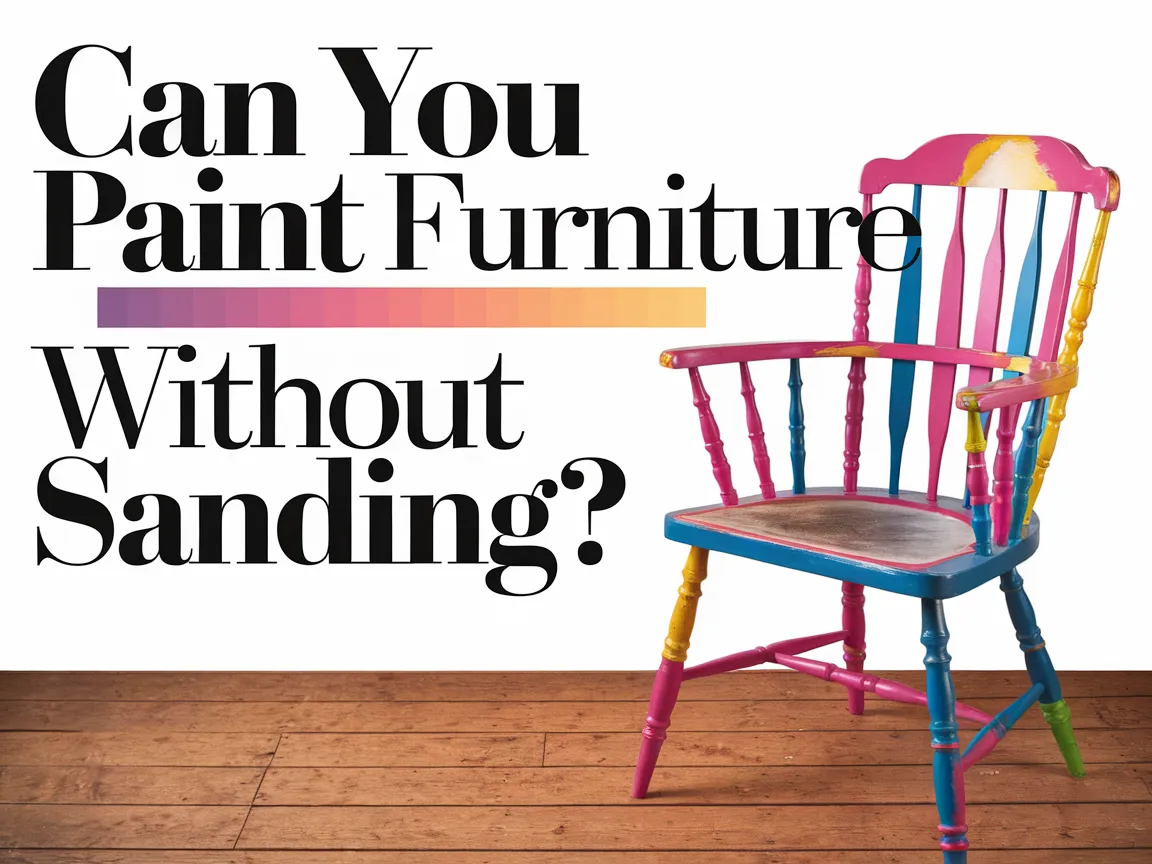Can You Paint a Kitchen Countertop?
Published on: May 20, 2025 | Last Updated: January 7, 2025
Written By: Isabella Cruz
A kitchen countertop is a flat surface in your kitchen where you prepare food and work on recipes. It’s kinda like a big table where all the cooking magic happens!
You might wonder, can you paint kitchen surfaces effectively? It’s super important to know because a fresh coat can totally change how your kitchen looks and feels. I’ve seen it bring new life to tired spaces, and let me tell ya, the transformation can be amazing!
In this article, I’ll cover essential considerations before you start, a step-by-step guide to painting your kitchen countertop, types of countertops you can paint, common issues you might face, and some creative DIY project ideas. So, whether you’re curious about what type of countertops can be painted or how to clean painted cabinets, you’re in the right place!
Contents
- 1 Can You Paint a Kitchen Countertop?
- 2 What is a Kitchen Countertop?
- 3 Essential Considerations Before You Start
- 4 Step-by-step Guide to Painting Your Kitchen Countertop
- 5 Recommended Color Palette for Painting Kitchen Countertops
- 6 How to Choose the Right Paint for Your Kitchen Countertop
- 7 Cost Breakdown of Painting a Kitchen Countertop
- 8 Types Of Countertops You Can Paint
- 9 Factors Affecting the Success Of Kitchen Countertop Painting
- 10 Common Issues When Painting Kitchen Countertops
- 11 Finishing Touches for a Polished Look
- 12 Frequently Asked Questions About Painting Kitchen Countertops
- 13 Conclusion: Achieving a Beautiful Painted Kitchen Countertop
- 14 Additional Resources
Can You Paint a Kitchen Countertop?
Yes, you can paint a kitchen countertop! Make sure to choose the right paint, like epoxy or chalk paint. Clean the surface well before painting. It’s an affordable way to refresh your kitchen!
The Finishing Touch
A freshly painted wall is a blank canvas. The best way to bring your room to life is with a single piece of statement art that ties everything together.
Browse Wall Art at Big Wall DecorWhat is a Kitchen Countertop?
A kitchen countertop surface is the flat surface in a kitchen where food preparation occurs. It typically measures 25 to 30 inches (63.5 To 76.2 Cm) in height and 24 to 30 inches (61 to 76 Cm) in depth, depending on the layout. If you’re interested in enhancing your kitchen’s walls with a sparkling touch, consider exploring how to add glitter to wall paint.
So, can you paint a kitchen countertop? My experience with painting one surprised me; I didn’t know paint could elevate a space! It made my kitchen feel fresh.
I used the countertop for everything: chopping veggies, rolling dough, and setting down my coffee. Painting the countertop added a personal touch and it holds up surprisingly well with the right finish. Knowing which types of countertops can be painted is essential. Some resin and laminate surfaces accept paint easily, transforming ordinary spaces into something uniquely yours! For guidance on enhancing creativity with digital tools, discover how to add keyboard shortcuts to Ibis Paint lasso tool.
Essential Considerations Before You Start
What do you need to get started?
- High-Quality Paint: Choose a durable brand like Rust-Oleum 2X Ultra Cover for smooth coverage on your kitchen countertop.
- Primer: Use a bonding primer, such as KILZ Adhesion, to ensure the paint adheres well to slick surfaces.
- Sandpaper: Use 220-grit sandpaper to create a rough surface for better paint adhesion.
- Sealer: A clear, wipe-on poly sealer like Minwax Polycrylic protects your work from scratches and stains.
- Brush and Roller Combo: A small brush and roller ensure even application. Pratt & Lambert tools work well.
So far we covered key factors to consider before starting. Let’s look at a detailed process for painting your kitchen countertop next.
Also See: How Much Do A Painter Make? Salary Insights

The Finishing Touch
A freshly painted wall is a blank canvas. The best way to bring your room to life is with a single piece of statement art that ties everything together.
Browse Wall Art at Big Wall DecorStep-by-step Guide to Painting Your Kitchen Countertop
Here are the steps to update your kitchen countertop with paint.
-
Prepare the Surface
Start by thoroughly cleaning your countertop with warm, soapy water to remove any grease, dirt, or residue that could interfere with paint adhesion.
Next, sand the surface lightly with 120-grit sandpaper. This creates a rough texture for the paint to grip, improving durability and finish.
-
Select the Right Paint and Supplies
Choose a high-quality, durable paint suitable for countertops, like acrylic polyurethane or epoxy-based paint. Look for products with at least a 2-to-1 solids content ratio for long-lasting results. If you’re considering different surfaces, find out if acrylic paint works on windows.
Have a few foam rollers and brushes ready; they help apply paint evenly and reach all the nooks and crannies.
-
Apply Primer
Using a foam roller, apply an even coat of primer to your countertop. A dedicated bonding primer ensures the best adhesion, which is essential for lasting color and finish quality.
Allow the primer to dry for about 4 hours before proceeding. Don’t skip this step; it’ll save you from peeling later!
-
Start Painting
Once the primer is dry, it’s time to paint! Use a quality roller for larger areas and a brush for edges or detailed sections.
Apply one thin coat for even coverage. Wait a full 24 hours before applying a second coat. Two thin coats are better than one thick coat as they help prevent drips and ensure a smooth finish.
-
Allow for Drying Time
After the final coat, patience pays off! Allow the countertop to dry completely for at least 48 hours for full curing.
It’s hard to resist, but staying away from your countertop is key for that professional look.
-
Apply a Sealant
Finally, seal your countertop with a polyacrylic or epoxy sealant to protect against scratches and moisture. A few thin layers of sealant are preferable for durability.
Let each coat dry for 4-6 hours. Ideally, wait a week before placing heavy items on your countertop for optimal durability.
We covered a step-by-step guide for painting kitchen countertops. We will now cover the recommended color palette for them.
Recommended Color Palette for Painting Kitchen Countertops
I recommend the “Coastal Breeze” palette for a fresh and inviting kitchen vibe. This theme has soft, relaxing colors that harmonize beautifully.
| Color Box | Hex Code | Color Name |
|---|---|---|
| #A2D8E2 | Soft Turquoise | |
| #F8E0D9 | Blush Pink | |
| #F9FBD1 | Pale Lemon |
That covers suggested color schemes for kitchen countertops. Let’s now take a look at selecting the best paint for your countertop.
How to Choose the Right Paint for Your Kitchen Countertop
Choosing the right paint is crucial for durability and looks.
-
Epoxy Paint
Epoxy paint forms a tough, lasting surface that’s easy to clean. It’s resistant to stains and moisture, ideal for busy kitchens.
-
Chalk Paint
Chalk paint offers a matte finish that’s trendy and can be distressed for a rustic look. However, it needs a strong topcoat to protect it.
-
Acrylic Paint
Acrylic is versatile and comes in various colors. While it’s easier to apply, it may require more frequent refinishing due to wear and tear.
So far we covered selecting the best paint for your kitchen countertop. Let’s look at the cost breakdown for this project next.

Cost Breakdown of Painting a Kitchen Countertop
Let’s look at the cost involved in painting your countertop.
| Item | Estimated Cost (USD) | Purpose |
|---|---|---|
| High-Quality Paint | $30-50 | Durable finish |
| Primer | $15-25 | Enhances adhesion |
| Sealant | $20-35 | Protects against damage |
| Tools (brushes, rollers) | $10-20 | Application |
| Total Estimated Cost | $85-150 |
Types Of Countertops You Can Paint
Let’s explore the types of countertops you can paint: laminate, wood, concrete, and granite.
-
Laminate
Laminate countertops, commonly found in kitchens, come in various colors and patterns. They can be painted but require thorough cleaning and priming.
-
Wood
Wood countertops offer a natural appearance and can be painted. Just sand and clean the surface well for proper paint adherence.
-
Concrete
Concrete countertops are durable and can be painted easily. Use high-quality paint compatible with concrete for a lasting finish.
-
Granite
Granite surfaces are trickier. You can paint over them, but it’s essential to use specialized paint designed for this material.
I’ve found painting laminate fascinating because it can completely transform the look at a low cost. It’s budget-friendly and can look amazing with the right technique!
Factors Affecting the Success Of Kitchen Countertop Painting
What factors impact your ability to paint countertops successfully?
-
Surface Material: Not all surfaces bond well with paint; laminate and wood generally work best.
-
Cleaning and Preparation: Thorough cleaning removes grease and grime, enhancing paint adhesion.
-
Type of Paint: High-quality epoxy or acrylic paints last longer and resist chipping.
-
Environmental Conditions: Humidity and temperature affect drying time. If it’s too hot or cold, you might regret it!
Common Issues When Painting Kitchen Countertops
My friend learned the hard way that surface prep is crucial. She skipped sanding and ended up with peeling paint! A good sand to 150 grit (0.15 Mm) prevents this.
The Finishing Touch
A freshly painted wall is a blank canvas. The best way to bring your room to life is with a single piece of statement art that ties everything together.
Browse Wall Art at Big Wall DecorTo fix it, use specific countertop paint, like epoxy. A single coat can take 4-6 hours to cure fully, and it’s best applied with a brush to minimize bubbles.
Finishing Touches for a Polished Look
Once you’ve completed your countertop painting project, apply a high-quality polyurethane sealant. Use a water-based product for low odor, like Minwax Polycrylic, and coat at least two times for durability. If you are interested in exploring creative ways to bring colors to different surfaces, you might find useful techniques on how to paint a basketball in our detailed guide.
Inspect seams for gaps shortly after drying. Ensure they’re tightly sealed to prevent moisture buildup, as even small spaces can cause peeling. Use vinyl acetate glue to seal them early.
An insider tip: For a long-lasting finish, use heat-resistant primers and paints, especially around stovetop areas. Select products rated for high temperatures to enhance durability.
Frequently Asked Questions About Painting Kitchen Countertops
Can I Use Any Type Of Paint on My Kitchen Countertop?
No, you cannot use any type of paint on your kitchen countertop. Only specific paints, like epoxy or acrylic designed for high wear, maintain durability and adhesion on surfaces exposed to heat and moisture.
How Long Will the Painted Countertop Last?
A painted countertop can last between 3 to 10 years, depending on the quality of paint and how well it’s maintained. High-quality paints endure better under normal kitchen use, minimizing chips and scratches. When selecting paints for countertop painting techniques, you might wonder if acrylic and latex paint can be mixed to achieve a desired finish.
Can I Paint Over Laminate Countertops?
Yes, you can paint over laminate countertops. However, the laminate surface must be properly cleaned and primed to ensure that the paint adheres well, preventing peeling or blistering.
Will Painting My Countertop Affect Its Resale Value?
Yes, painting your countertop can affect its resale value. While a fresh coat can enhance appeal, some buyers may prefer original materials over a painted finish, which could lower perceived value. If you’re considering using different paint types, you might wonder whether you can paint acrylic over latex.
How Do I Maintain a Painted Kitchen Countertop?
You can maintain a painted kitchen countertop by cleaning it regularly with mild soap and water and avoiding harsh chemicals. Regular care keeps the surface looking fresh and extends its lifespan. If you’re curious about applying paint to other surfaces, you might want to explore how to paint aluminum siding for a fresh look.
What Type Of Countertops Can Be Painted?
The types of countertops that can be painted include laminate, ceramic tile, and even some plywood surfaces. Each type requires specific preparation techniques for lasting results.
Is It Safe to Use a Painted Countertop for Food Preparation?
Yes, a painted countertop can be safe for food preparation, provided you use food-safe paint. It’s crucial to ensure that no toxic substances are present post-application.
Conclusion: Achieving a Beautiful Painted Kitchen Countertop
We’ve reached the end, and I appreciate you sticking around. We covered what a kitchen countertop is, essential considerations before you start, a step-by-step guide to painting, a recommended color palette, types of countertops you can paint, factors affecting success, common issues when painting, finishing touches for a polished look, and creative DIY project ideas.
I trust these insights have been helpful. So, can you paint a kitchen countertop? Yes, with the right preparation, paint, and technique, you can transform your kitchen surface into a beautiful, customized space.
For more expert tips and inspiration, visit Paint Answers.
Additional Resources
- Edwards, B. (2012). Drawing on the Right Side of the Brain. New York, NY: TarcherPerigee.
- Glossy Painted Kitchen Counter Top Tutorial | Remodelaholic
- Countertop Paint – The Home Depot
- How to Paint Countertops & What You NEED to Know First
Isabella is a Filipino-American art writer and critic specializing in contemporary painting, blending her Filipino heritage with global art trends. She holds a BFA from California State University, Long Beach, and a Minor in Art History from the University of the Philippines. Isa has experience as a Gallery Assistant, Art Appraisal Specialist, and Social Media Creative for Art & Design.
Countertop, Interior









